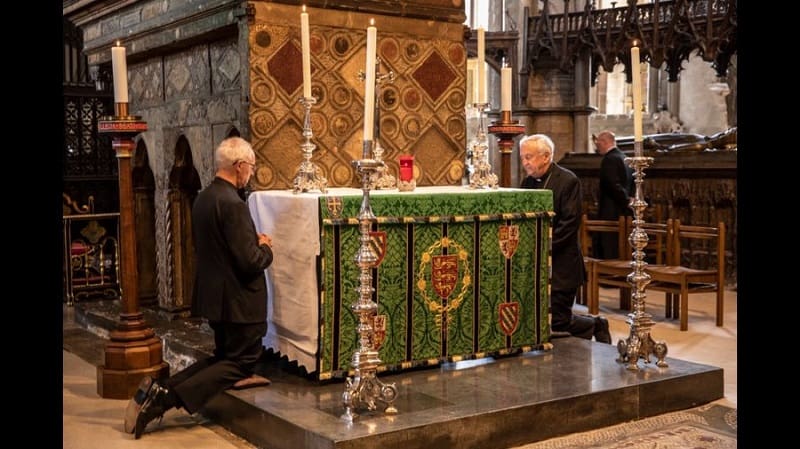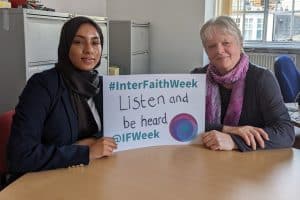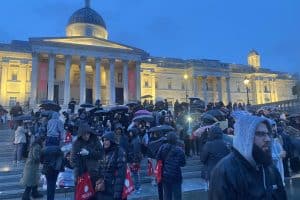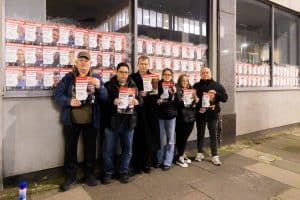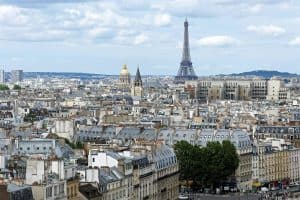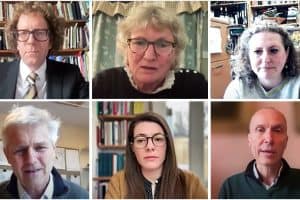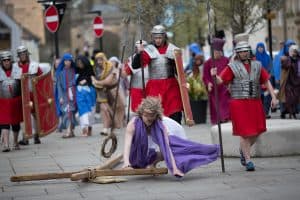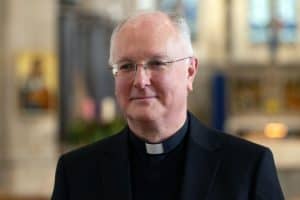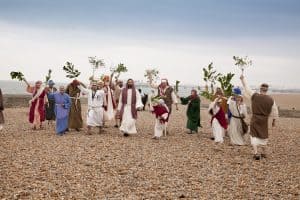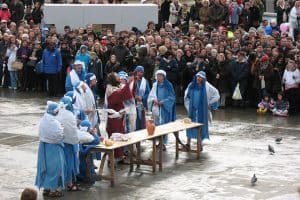By Lianne Kolirin
Congregations have quietly celebrated the news today that places of worship in England have been allowed to reopen for private prayer.
The Archbishop of Canterbury Justin Welby and Cardinal Vin Nichols, leader of the Roman Catholic church in England and Wales, prayed together in Westminster Cathedral and Westminster Abbey, socially distanced, to mark the reopening of church buildings for individual prayer. In a tweet they said: “We continue to give thanks for all battling the pandemic and pray for a renewal of our common life.”
After almost three months of closure due to the coronavirus pandemic, places of worship across England have been allowed to welcome people back – but only for private prayer.
While social media has been flooded with images of lengthy queues outside non-essential shops, which have also opened their doors today for the first time since lockdown began in March, the development at places of worship has been a much more muted affair.
The government has permitted private prayer, providing individuals are socially distanced from members of other households. Collective or communal prayer is still not permitted, and is not expected to return until July 4 at the very earliest.
Religious and lay leaders must communicate with their followers on what is permitted and how the place of worship is planning to ensure social distancing. Recommended measures include enhanced cleaning regimes, signs and reminders to worshippers and in some cases PPE for clergy and other employees.
Earlier this morning the Bishop of Bath and Wells and the Dean of Wells entered Wells Cathedral together, meeting to pray for those affected by the virus.
In a moving video clip posted on Twitter, the very Rev Dr John Davies said: “Now we are open and the public is welcome to come in. People will be able to express all those feelings and thoughts and prayers that have been in their hearts and minds through these difficult days. The doors are open and everybody is welcome to come in.”
A tweet from Lincoln Cathedral read: “The last 12 weeks has been a strange time which has seen Lincoln Cathedral stand silent and empty for the first time in its history. We are delighted to be able to open wide our doors and welcome everyone back into this special place of worship, prayer and spiritual nurture.”
St Paul’s Cathedral (pictured), usually a huge tourist attraction as well as a public place of worship, will be open for four hours from 11am each morning, though there is no access to the dome galleries or crypt. Visitors are requested to keep two metres – or four cathedral floor tiles – apart, with a one way system also in place. Face masks are welcome but are not mandatory, while hand sanitiser stations are in place at the entrance.
Private prayer will be restricted to hour-long sessions at the Roman Catholic Westminster Cathedral, though a post on social media states that: “Unfortunately confessions, side chapels, toilets, shop & café are not available for the time being. Liturgies will continue to be live streamed.”
The maximum number of people allowed in a place of worship is determined by the size and circumstance of the premises, according to the government guidelines, which state that individuals should keep to the 2 metre distance and refrain from kissing and touching holy books and other devotional items that are handled communally. This means books, prayer mats and other items should not be used on a shared basis.
Singing and playing instruments is prohibited, with the exception of the organ. Ablution rituals should not be carried out in places of worship, cash giving is discouraged and regular hand sanitizing is essential.
While the move towards a phased reopening has been generally welcomed, not all places of worship are opening at this time, largely due to the nature of varying religious practice.
A spokesman for the United Synagogue, the orthodox Jewish body, said: “The government’s announcement that houses of worship will be open for private prayer is an important first step towards our return and will bring comfort to many people of faith.”
Synagogues are a place for communal as opposed to private prayer, the spokesman explained, which is why synagogues remain closed at this time.
“According to Jewish tradition one should ideally pray in a synagogue, but one can pray anywhere. However, for formalised prayer services we require a minyan (quorum) to enable, for example, saying Kaddish and reading from the Torah, and we look forward to that being allowed as soon as it is safe to do so.”
Rabbis will now be able to broadcast from their synagogues should they wish – though not on the Sabbath or during religious festivals – as the Jewish considers the way forward in the coming weeks and months.
British Muslims are adopting a similar approach, according to the Muslim Council of Britain (MCB). In a statement to the community headlined “Do not rush: new guidelines for safely resuming mosque congregational prayers”, Harun Khan, Secretary General of the MCB, said: “Though we as Muslims are longing to go back to our mosques and worship with our communities, it is essential that we do not rush. Coronavirus is still prevalent and dangerous, and mosque leaders must carefully plan and decide when they feel they can put the required controls in place to reopen in the safest way possible.”
He added: “Regarding the UK Government’s announcement that in England, places of worship can reopen for ‘individual worship’, while this may be suitable for church buildings, it is evident that implementing this for most mosques is considerably challenging and impractical. We recommend that it is more useful for mosque leaders to invest their time and efforts into preparing for safely resuming congregational prayers from as early as 4 July, with time frames in Scotland and Wales to be announced.”
The Mosque and Imams National Advisory Board, MINAB, welcomed the reopening of places of worship but said that under the current guidelines mosques cannot hold five daily prayers in congregation. As such, they have issued detailed guidance, while suggesting that small-scale congregational prayers are allowed as soon as safely possible so that a small number of people can hold five daily prayers in mosques.
In an interview with ITV News, a spokesman for the Guru Nanak Gurdwara Smethwick in Birmingham said that a range of measures had been taken to protect Sikh worshippers. “It’s very important because we want to keep the community safe, we want to keep the congregation safe”, he said. “We don’t want to be the reason why someone gets sick, we want to protect everyone.”

